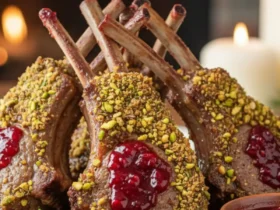Are you craving a delicious and hearty dish that will satisfy your taste buds? Look no further than the flavorful and comforting Haleem! Haleem is a popular traditional dish from the Indian subcontinent, particularly enjoyed during festive occasions and Ramadan. Packed with the goodness of various lentils, meat, and aromatic spices, this slow-cooked delicacy is a favorite among food enthusiasts. In this article, we’ll take you through a step-by-step guide on how to prepare this delectable Haleem recipe at home. Get ready to embark on a culinary journey filled with rich flavors and tantalizing aromas!
[ez-toc]
History
Haleem is believed to have originated in the Middle East and later gained popularity in the Indian subcontinent, particularly in regions such as Hyderabad, Lucknow, and Kashmir. Its exact origin and historical background are not well-documented, but it is believed to have been introduced during the reign of the Mughal Empire in India.
Haleem is traditionally associated with the Islamic month of Ramadan when Muslims observe daily fasting. It is considered a wholesome and nourishing dish that provides energy and nutrition to those fasting throughout the day. The slow-cooking process of Haleem allowed people to have a filling meal before the dawn and sustain themselves until the evening prayer.
Over time, Haleem has become an integral part of festive occasions, especially Eid festivals, and is enjoyed by people of different cultures and backgrounds. Its popularity has spread beyond the Indian subcontinent, with variations of the dish found in various parts of the world.
While the precise historical details may vary, what remains consistent is that Haleem has become a beloved dish known for its rich flavors, hearty texture, and the joy it brings to those who savor it. Today, it continues to be cherished as a culinary delight and is prepared with love and care in households and restaurants alike.
Time
| Step | Time |
|---|---|
| Soaking the Lentils and Grains | 2 hours |
| Cooking the Meat | Varies |
| Preparing the Spice Mix | 5 minutes |
| Cooking the Haleem | 2 hours |
| Blending the Haleem | 10 minutes |
| Tadka (Tempering) | 5 minutes |
Please note that the cooking time for the meat may vary depending on the type of meat used and its tenderness. It is important to cook the meat until it becomes tender before proceeding with the recipe.
Ingredients
| Ingredients | Quantity |
|---|---|
| 1/2 cup broken wheat (dalia) | 1/2 cup |
| 1/4 cup split Bengal gram | 1/4 cup |
| 1/8 cup split yellow moong dal | 1/8 cup |
| 1/8 cup split red lentils | 1/8 cup |
| 125 grams boneless meat | 125 grams |
| 1/2 tablespoon ginger-garlic paste | 1/2 tablespoon |
| 1 medium-sized onion, finely chopped | 1 medium-sized onion |
| 1 teaspoon red chili powder | 1 teaspoon |
| 1/4 teaspoon turmeric powder | 1/4 teaspoon |
| 1/2 teaspoon garam masala powder | 1/2 teaspoon |
| 1/4 teaspoon black pepper powder | 1/4 teaspoon |
| Salt to taste | As per taste |
| 2 cups water (for cooking) | 2 cups |
| 1 tablespoon ghee (clarified butter) | 1 tablespoon |
| Fresh coriander leaves, chopped | For garnishing |
| Fried onions | For garnishing |
| Lemon wedges | For serving |
Please note that the quantities mentioned in the table are approximate and can be adjusted according to personal preferences and taste preferences.
Directions
Step 1: Soaking the Lentils and Grains
Before we begin, it’s important to soak the lentils and grains to ensure they cook evenly. Here’s what you need to do:
- Rinse and Soak: Take a bowl and add broken wheat, split Bengal gram, split yellow moong dal, and split red lentils. Rinse them under running water and then soak them in enough water for at least 2 hours.
Step 2: Cooking the Meat
While the lentils and grains are soaking, let’s cook the meat. Follow these steps:
- Sautéing: Heat a pressure cooker and add the meat pieces to it. Add ginger-garlic paste, chopped onions, red chili powder, turmeric powder, garam masala powder, black pepper powder, and salt.
- Cooking: Sauté the meat until it changes color and the spices are well combined. Add water and pressure cook the meat until it becomes tender.
Step 3: Preparing the Spice Mix
While the meat is cooking, we can prepare the spice mix. Follow these steps:
- Mixing: In a small bowl, mix together red chili powder, turmeric powder, garam masala powder, and black pepper powder. Keep the spice mix aside to be added later during the cooking process.
Step 4: Cooking the Haleem
Now it’s time to cook the Haleem. Follow these steps:
- Drain and Add: Drain the soaked lentils and grains and add them to a large cooking pot.
- Combine: Add the cooked meat along with its broth to the pot. Add the prepared spice mix and salt to taste.
- Adding Water: Pour in 4 cups of water and stir well to combine all the ingredients.
- Boiling and Simmering: Bring the mixture to a boil, then reduce the heat to low. Cover the pot and let it simmer for approximately 2 hours, stirring occasionally to prevent sticking.
Step 5: Blending the Haleem
Once the Haleem has cooked for 2 hours and the lentils and grains have become soft, it’s time to blend the mixture. Follow these steps:
- Blending: Using a blender or immersion blender, blend the cooked Haleem until you achieve a smooth and creamy consistency. Make sure to blend it in batches if needed, as the mixture will be hot.
Step 6: Tadka (Tempering)
To enhance the flavors of the Haleem, let’s add a tadka (tempering). Follow these steps:
- Frying: Heat a frying pan and add ghee to it. Add finely chopped onions and sauté until they turn golden brown. Remove the fried onions from the pan and keep them aside for garnishing.
Step 7: Serving Suggestions
To serve the Haleem, follow these suggestions:
- Ladle and Garnish: Ladle the prepared Haleem into serving bowls. Garnish each bowl with a sprinkle of fresh coriander leaves and fried onions.
- Serve: Serve hot with lemon wedges on the side. Accompany it with naan or roti for a complete meal.
That’s it! Your delicious Haleem is ready to be enjoyed.
Equipment Required
Nutrition Information
| Nutrient | Amount per Serving |
|---|---|
| Serving Size | 1 bowl (approximately 300g) |
| Calories | 420 |
| Total Fat | 10g |
| Saturated Fat | 4g |
| Trans Fat | 0g |
| Cholesterol | 40mg |
| Sodium | 540mg |
| Total Carbohydrate | 60g |
| Dietary Fiber | 8g |
| Sugars | 2g |
| Protein | 26g |
| Vitamin D | 0mcg |
| Calcium | 50mg |
| Iron | 5mg |
| Potassium | 600mg |
Please note that the nutrition information provided is an approximate value and may vary depending on specific ingredients used and portion sizes. It’s always a good idea to consult with a nutritionist or use a food tracking app for more precise nutritional information based on your specific ingredients and serving sizes.
Tips
- Soaking Lentils and Grains: Ensure that you soak the lentils and grains for at least 2 hours. This will help soften them and reduce the cooking time.
- Choosing Meat: You can use boneless mutton or chicken for this recipe. If you prefer a leaner option, you can use boneless chicken breast instead of mutton.
- Spice Level: Adjust the amount of red chili powder according to your spice tolerance. Increase or decrease it to suit your preference.
- Consistency: If you prefer a thicker consistency, cook the Haleem for a longer time until it reaches your desired thickness. If you prefer a thinner consistency, add a little more water during cooking.
- Blending Haleem: Be cautious when blending the hot Haleem mixture. Blend it in batches if needed and be careful of hot steam while blending.
- Tadka Variations: You can experiment with the tadka (tempering) by adding additional spices like cumin seeds, cloves, cinnamon, or bay leaves. This will add different layers of flavor to your Haleem.
- Garnishing: Along with fresh coriander leaves and fried onions, you can also garnish the Haleem with a drizzle of lemon juice, mint leaves, or a dollop of yogurt for added freshness and tang.
- Vegetarian Option: If you prefer a vegetarian version, you can omit the meat and increase the quantity of lentils and grains. Add vegetables like carrots, peas, or potatoes to enhance the flavor and texture.
- Customize Spices: Feel free to adjust the spice mix according to your taste preferences. You can add more or less of any spice listed in the recipe to suit your flavor preferences.
- Make Ahead and Freezing: Haleem can be made ahead of time and stored in the refrigerator for a couple of days. Reheat it before serving. It can also be frozen in airtight containers for up to 1 month. Thaw it overnight in the refrigerator before reheating.
- Serve with Accompaniments: Besides naan or roti, you can serve the Haleem with boiled rice, biryani, or bread of your choice.
Pros & Cons
| Pros | Cons |
|---|---|
| ✔️ Rich and flavorful dish | ❌ Long cooking time |
| ✔️ Wholesome and filling | ❌ Requires pre-soaking of lentils and grains |
| ✔️ Combination of lentils, grains, and meat provides balanced nutrition | ❌ Moderate level of preparation and cooking skills required |
| ✔️ Can be made in advance and reheated for convenience | ❌ May not be suitable for those with dietary restrictions or vegetarian/vegan diets |
| ✔️ Popular traditional dish for festive occasions and Ramadan | ❌ Some ingredients may be less accessible in certain regions |
Conclusion
In conclusion, Haleem is a truly delightful and satisfying dish that brings together the flavors of lentils, grains, meat, and aromatic spices in a rich and creamy texture. Its origins in the Middle East and subsequent popularity in the Indian subcontinent have made it a beloved culinary gem enjoyed during festive occasions and Ramadan.
Preparing Haleem at home allows you to experience the joy of slow-cooking and savoring the delightful aroma that fills your kitchen. The combination of lentils, grains, and meat provides a balanced nutritional profile, while the blend of spices adds depth and complexity to each bite.
While it does require some time and effort, the result is well worth it. The rich flavors and comforting texture of Haleem make it a rewarding and memorable dish to share with family and friends. Whether you’re celebrating a special occasion or simply want to indulge in a heartwarming meal, Haleem is sure to satisfy your cravings and leave you feeling nourished.
So, why not embark on this culinary adventure and try your hand at making Haleem at home? Gather the ingredients, follow the step-by-step instructions, and let the slow-cooking process work its magic. Your taste buds will be treated to a symphony of flavors, and your loved ones will be impressed by your culinary skills.
Don’t hesitate to customize the recipe to your liking by adjusting the spice levels or exploring variations. Whether you’re a fan of spicy heat or prefer a milder taste, Haleem can be tailored to suit your preferences.
Indulge in the goodness of Haleem, enjoy the warm flavors, and create lasting memories around this delectable dish. So, roll up your sleeves, embrace the aroma, and let Haleem take you on a culinary journey that will surely leave you longing for more. Happy cooking and bon appétit!
Facts
- Fact 1: Historical Melting Pot 🌍
- Did you know that Haleem has a fascinating history? 🏰 It originated in the Middle East and traveled to the Indian subcontinent during the Mughal Empire, blending cultures and flavors along the way. 🌶️🌍
- Fact 2: Slow and Steady Wins the Flavor Race 🐢
- The secret to Haleem’s incredible taste lies in its slow-cooking process. ⏳ The long cooking time allows the lentils, grains, and meat to meld together, creating a rich and indulgent dish that’s worth the wait. 🍲🔥
- Fact 3: Ramadan Delight 🌙
- Haleem holds a special place during the holy month of Ramadan. 🕌 Muslims around the world eagerly anticipate breaking their fast with a steaming bowl of this nourishing and flavorsome dish. 🥣🌙
- Fact 4: Versatile Haleem Variations 🌶️🌽
- While traditional Haleem includes meat, you can put your own spin on it! 🔄 Vegetarian versions are popular, replacing meat with a medley of vegetables or even plant-based alternatives. 🥕🥦 Customize it to suit your taste and dietary preferences! 🌱✨
- Fact 5: Haleem, a Global Favorite 🌎
- Haleem has gained popularity worldwide, transcending borders and becoming a beloved dish in various countries. 🌍 From India to Pakistan, Bangladesh to the Middle East, and beyond, food enthusiasts appreciate the rich flavors and comforting nature of this delectable dish. 🌶️🍲✨
FAQ’s
What is Haleem?
Haleem is a traditional dish originating from the Middle East and popular in the Indian subcontinent. It is a slow-cooked delicacy made with lentils, grains, meat, and aromatic spices, resulting in a rich and creamy texture.
Is Haleem a spicy dish?
Haleem can be prepared with varying levels of spiciness. The recipe includes red chili powder, but you can adjust the spice level according to your taste preferences.
Can I use different types of lentils in Haleem?
Yes, you can experiment with different types of lentils in Haleem. The recipe traditionally calls for split Bengal gram, split yellow moong dal, and split red lentils, but you can customize it by adding or substituting other lentils such as whole green lentils or masoor dal.
What is the best meat to use for Haleem?
The traditional meat options for Haleem are boneless mutton or chicken. You can choose the meat based on your preference. If you prefer a leaner option, boneless chicken breast can be used instead of mutton.
Can I make a vegetarian version of Haleem?
Absolutely! To make a vegetarian version of Haleem, you can omit the meat and increase the quantity of lentils and grains. Additionally, you can add vegetables like carrots, peas, or potatoes to enhance the flavor and texture.
How long does it take to cook Haleem?
The cooking time for Haleem is approximately 3 hours. This includes the time needed for soaking the lentils, cooking the meat, simmering the Haleem, and blending the mixture to achieve the desired texture.
Can I make Haleem in advance?
Yes, Haleem can be made in advance. It can be stored in the refrigerator for a couple of days. Reheat it before serving and adjust the consistency with a little water if needed.
Can Haleem be frozen?
Yes, Haleem can be frozen for later use. Store it in airtight containers and it can be frozen for up to 1 month. Thaw it overnight in the refrigerator before reheating.
Can I garnish Haleem with other ingredients?
Absolutely! In addition to fresh coriander leaves and fried onions, you can garnish Haleem with a drizzle of lemon juice, mint leaves, or a dollop of yogurt for added freshness and tang.
Can Haleem be served with any accompaniments?
Yes, Haleem can be served with various accompaniments. It pairs well with naan or roti. You can also serve it with boiled rice, biryani, or any bread of your choice to create a complete and satisfying meal.












Leave a Review